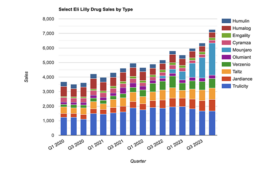Technology Advances
Tracking normal development and disease pathways in the nervous system creates challenges at least as complex as the network of 100 billion neurons in the human brain. Beyond that gigantic number of neurons, the nervous system also depends on a wide range of biochemical interactions. As a result, companies keep making new products that help researchers unravel what neurons do.
|
For example, Patricia Mayer, global product portfolio leader for research reagents at PerkinElmer Life and Analytical Sciences in Waltham, Mass., says, “We’ve seen a dramatic increase in interest in PerkinElmer’s TSA, or tyramide signal amplification technology because of its unique ability to increase sensitivity in immunohistochemistry and in situ hybridization without increasing the background or time to result.” She adds, “Our newest kits—the TSA Plus DNP Systems—are ideal for work with brain tissue because they are biotin-free, [thus] eliminating background problems relating to endogenous biotin.” For instance, the Allen Institute for Brain Science in Seattle, Wash., used TSA technology, in part, to map expression patterns in the brain.
As Mayer points out, these techniques—immunohistochemistry and in situ hybridization—”provide a better understanding of signal transduction pathways, ion channels, and other aspects of neuronal function.” She adds, “This is critical for target discovery and assessing impact of therapeutics in animal models.”
Besides genes, assays can target other entities. (See “Giving GPCRs a Glo.”) For example, free radicals trigger oxidative damage in the brain that contributes to a range of neurodegenerative diseases, including Alzheimer’s disease and Parkinson’s disease. To unravel the mechanism behind this connection, scientists might want to explore how free radicals impact proteins. According to Nihar Prasanna, product manager, neuroscience, in the bioscience division at Millipore Corporation in Temecula, Calif., “The OxyELISA Oxidized Protein Quantitation Kit provides a sensitive methodology for detection and [quantification] of proteins modified by oxygen free radicals and other reactive species.” Prasanna adds, “As result of oxidative stress, oxygen free radicals and other reactive species introduce carbonyl groups into proteins in neuronal and glial cells. The OxyELISA kit detects these carbonyl groups, which are hallmarks of the cellular oxidative stress level.”
Prasanna also points out several advantages of this kit. For one thing, Prasanna notes, “The kit uses a direct-labeled monoclonal antibody that is readily detected without a secondary antibody, making the ELISA assay more specific, easier to use, and faster.” In addition, Prasanna mentions the high throughput capabilities and automation-friendly sides of this kit.
Such tools help neuroscientists dig into the vast array of networks in the brain. As a result, we can learn more about how the brain works and why it fails.
Giving GPCRs a Glo
G protein–coupled receptors (GPCRs) participate in a wide range of signaling processes, including the cellular response to neurotransmitters. That makes GPCRs potential drug targets for a range of neurological diseases. To follow GPCR-based mechanisms of disease or normal signal transduction, researchers need tools that track the steps. Promega Corporation in Madison, Wisc., recently developed its GloSensor cAMP Assay, which measures the level of cAMP in cells. According to Neal Cosby, PhD, strategic marketing manager, drug screening at Promega, “cAMP is a key second messenger involved in signal transduction of many GPCRs.” He adds, “The new assay is based on the GloSensor Technology, which is a genetically modified form of firefly luciferase that upon binding cAMP induces a multiple fold increase in light output.”
The key advantage of this assay is that it works in live cells. Consequently, says Cosby, this assay is “highly amenable to high throughput screening. And screeners can perform signal kinetic studies, which are reversible.”
About the Author
May is a publishing consultant for science and technology based in Houston, Texas.
This article was published in Drug Discovery & Development magazine: Vol. 11, No. 10, October, 2008, pp. 14-15.
Filed Under: Drug Discovery






